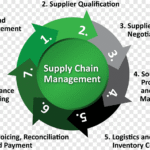Queensland small business owners have a golden opportunity to enhance their skills, network with industry…

Saudi Arabia is undergoing a dramatic transformation, with its skyline evolving as rapidly as its economic ambitions. The Kingdom’s futuristic megaprojects, characterized by soaring skyscrapers and groundbreaking designs, are more than just architectural marvels—they symbolize Saudi Arabia’s determination to diversify its economy, attract global investment, and position itself as a leading business and tourism hub. From the record-breaking Jeddah Tower to the revolutionary NEOM smart city, these structures reflect the nation’s Vision 2030 goals, showcasing innovation, sustainability, and a bold vision for the future.
The Rise of Saudi Arabia’s Megaprojects
Under Crown Prince Mohammed bin Salman’s Vision 2030 plan, Saudi Arabia is shifting away from its oil-dependent economy by investing heavily in infrastructure, tourism, and technology. One of the most visible signs of this transformation is the surge in ambitious architectural projects that push the boundaries of engineering and design.
1. Jeddah Tower: Reaching for the Sky
Formerly known as the Kingdom Tower, the Jeddah Tower is set to become the world’s tallest building, surpassing the Burj Khalifa in Dubai. At over 1,000 meters (3,280 feet), this megastructure represents Saudi Arabia’s desire to compete on the global stage.
Beyond its height, the tower is designed to be a mixed-use development featuring luxury residences, hotels, offices, and observation decks. Its sleek, asymmetrical design minimizes wind resistance while maximizing stability—an engineering feat that underscores the Kingdom’s commitment to cutting-edge innovation.
2. NEOM and The Line: A Futuristic Urban Revolution
Perhaps the most ambitious project in Saudi Arabia’s portfolio is NEOM, a $500 billion smart city in the northwest region. At the heart of NEOM is The Line, a 170-kilometer-long linear city designed to house 9 million residents with zero cars, zero streets, and zero carbon emissions.
The Line’s mirrored façade and fully integrated AI-driven infrastructure represent a radical departure from traditional urban planning. By prioritizing sustainability and technology, Saudi Arabia aims to attract global businesses, tech startups, and expatriates, fostering a knowledge-based economy.
3. Red Sea Project and Qiddiya: Luxury Tourism and Entertainment
Beyond skyscrapers, Saudi Arabia is investing in tourism and entertainment to diversify its revenue streams. The Red Sea Project is a luxury tourism destination featuring eco-friendly resorts, while Qiddiya, near Riyadh, is being developed as an entertainment city with theme parks, sports facilities, and cultural venues.
These projects align with Vision 2030’s goal of increasing tourism’s contribution to GDP from 3% to 10%, reducing reliance on oil while creating jobs and boosting international visitor numbers.
Economic and Business Implications
Saudi Arabia’s sky-high architecture is not just about aesthetics—it’s a strategic economic move.
1. Attracting Foreign Investment
By developing world-class infrastructure, the Kingdom aims to position itself as a prime destination for foreign direct investment (FDI). Projects like NEOM and the Riyadh International Convention & Exhibition City are designed to host global summits, tech conferences, and business forums, enhancing Saudi Arabia’s role as a regional business hub.
2. Creating Jobs and Diversifying the Workforce
The construction and operation of these megaprojects require a massive workforce, creating employment opportunities for Saudis and expatriates alike. Additionally, the focus on tech-driven cities like NEOM encourages skill development in AI, renewable energy, and smart infrastructure.
3. Strengthening Global Competitiveness
Saudi Arabia is competing with regional powerhouses like the UAE and Qatar. By building record-breaking structures and smart cities, the Kingdom is signaling its readiness to lead in innovation, sustainability, and business-friendly policies.
Challenges and Future Prospects
While these projects are impressive, they face challenges, including:
-
Funding and Economic Viability: Some projects require hundreds of billions in investment, and global economic fluctuations could impact their completion.
-
Sustainability Concerns: Despite green initiatives, large-scale construction has environmental impacts that must be managed.
-
Execution Risks: Delays and logistical hurdles are common in megaprojects, requiring strong governance and adaptability.
However, if successfully implemented, these developments could redefine Saudi Arabia’s economy, making it a global leader in business, tourism, and technology.
Conclusion
Saudi Arabia’s sky-high architecture is more than just steel and glass—it’s a statement of ambition. From the Jeddah Tower piercing the clouds to The Line’s revolutionary urban design, these projects embody the Kingdom’s drive toward economic diversification and global influence. As Vision 2030 progresses, the world will be watching to see if Saudi Arabia can turn its towering dreams into reality.
By embracing innovation, sustainability, and bold business strategies, the Kingdom is not just building structures—it’s shaping the future.





